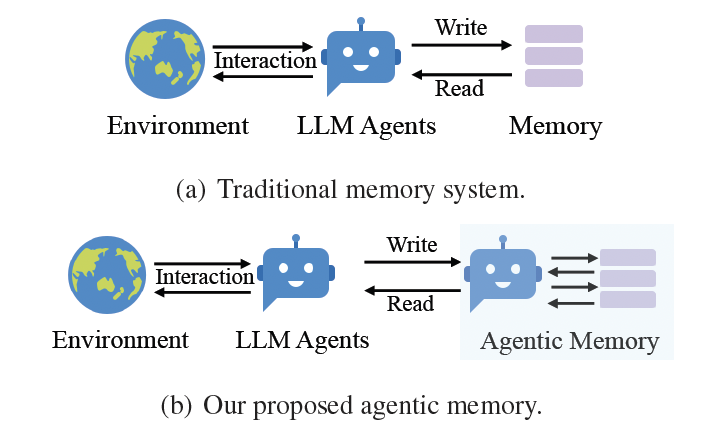Anthropic raises $3.5 billion, reaching $61.5 billion valuation as AI investment frenzy continues
Join our daily and weekly newsletters for the latest updates and exclusive content on industry-leading AI coverage. Learn More Anthropic closed a $3.5 billion series E funding round, valuing the AI company at $61.5 billion post-money, the firm announced today. Lightspeed Venture Partners led the round with a $1 billion contribution, cementing Anthropic’s status as one of the world’s most valuable private companies and demonstrating investors’ unwavering appetite for leading AI developers despite already astronomical valuations. The financing attracted participation from an impressive roster of investors including Salesforce Ventures, Cisco Investments, Fidelity Management & Research Company, General Catalyst, D1 Capital Partners, Jane Street, Menlo Ventures and Bessemer Venture Partners. “With this investment, Anthropic will advance its development of next-generation AI systems, expand its compute capacity, deepen its research in mechanistic interpretability and alignment, and accelerate its international expansion,” the company said in its announcement. Revenue skyrockets 1,000% year-over-year as enterprise clients flock to Claude Anthropic’s dramatic valuation reflects its exceptional commercial momentum. The company’s annualized revenue reached $1 billion by December 2024, representing a tenfold increase year-over-year, according to people familiar with the company’s finances. That growth has accelerated further, with revenue reportedly increasing by 30% in just the first two months of 2025, according to a Bloomberg report. Founded in 2021 by former OpenAI researchers including siblings Dario and Daniela Amodei, Anthropic has positioned itself as a more research-focused and safety-oriented alternative to its chief rival. The company’s Claude chatbot has gained significant market share since its public launch in March 2023, particularly in enterprise applications. Krishna Rao, Anthropic’s CFO, said in a statement that the investment “fuels our development of more intelligent and capable AI systems that expand what humans can achieve,” adding that “continued advances in scaling across all aspects of model training are powering breakthroughs in intelligence and expertise.” AI valuation metrics evolve: 58x revenue multiple shows market maturation The funding round comes at a pivotal moment in AI startup valuations. While Anthropic’s latest round values the company at roughly 58 times its annualized revenue, down from approximately 150 times a year ago, this still represents an extraordinary premium compared to traditional software companies, which typically trade at 10 to 20 times revenue. What we’re witnessing with AI valuations isn’t merely another tech bubble, but rather a fundamental recalibration of how growth is valued in the marketplace. Traditional valuation models simply weren’t designed for companies experiencing growth curves this steep. When a firm like Anthropic can increase revenue tenfold in a single year — something that would take a typical software company a decade to achieve — investors are essentially buying future market dominance rather than current financials. This phenomenon creates a fascinating paradox: As AI companies grow larger, their revenue multiples are contracting, yet they remain astronomically high compared to any other sector. This suggests investors aren’t simply drunk on AI hype but are making calculated bets that these firms will eventually grow into their valuations by capturing the enormous productivity gains that advanced AI promises to unleash across every sector of the economy. Anthropic’s valuation surge contrasts with conventional tech wisdom that multiples should decrease as companies mature. The continued investor enthusiasm underscores beliefs that AI represents a fundamental technological shift rather than just another software category. Amazon and Google back Anthropic’s B2B strategy with $11 billion combined investment The funding comes after Anthropic secured major strategic investments from tech giants. Amazon has invested a total of $8 billion in the startup, making AWS Anthropic’s “primary cloud and training partner” for deploying its largest AI models. Google has committed more than $3 billion to the company. Unlike OpenAI, which has increasingly focused on developing consumer applications, Anthropic has positioned itself primarily as a B2B technology provider enabling other companies to build with its models. This approach has attracted clients ranging from startups like Cursor and Replit to global corporations including Zoom, Snowflake and Pfizer. “Replit integrated Claude into ‘Agent’ to turn natural language into code, driving 10X revenue growth,” Anthropic noted in its announcement. Other notable implementations include Thomson Reuters’ tax platform CoCounsel, which uses Claude to assist tax professionals, and Novo Nordisk, which has used Claude to reduce clinical study report writing “from 12 weeks to 10 minutes.” Anthropic also highlighted that Claude now helps power Amazon’s Alexa+, “bringing advanced AI capabilities to millions of households and Prime members.” SoftBank, OpenAI and DeepSeek intensify global AI competition with billion-dollar moves The funding announcement comes just weeks after reports that SoftBank is finalizing a massive $40 billion investment in OpenAI at a $260 billion pre-money valuation, highlighting the escalating stakes in the AI race. Meanwhile, Chinese AI firm DeepSeek has disrupted the market with its R1 model, which reportedly achieved similar capabilities to U.S. competitors’ systems but at a fraction of the cost. This challenge has prompted established players to accelerate their development timelines. Anthropic recently responded with the launch of Claude 3.7 Sonnet and Claude Code, with Sonnet 3.7 specifically optimized for programming tasks. The company claims these products have “set a new high-water mark in coding abilities” and plans “to make further progress in the coming months.” The trillion-dollar AI market: Investors bet big despite profitability questions The massive funding rounds flowing into leading AI companies signal that investors believe the generative AI market could indeed reach the $1 trillion valuation that analysts predict within the next decade. However, profitability remains a distant goal. Like its competitors, Anthropic continues to operate at a significant loss as it invests heavily in research, model development, and compute infrastructure. The long path to profitability hasn’t deterred investors, who view these companies as platforms that could fundamentally transform how humans interact with technology. As the AI arms race intensifies, the key question remains whether these multi-billion dollar valuations will eventually be justified by sustainable business models or if the current investment environment represents an AI bubble. For now, Anthropic’s successful fundraise suggests investors are firmly betting on the former. source













